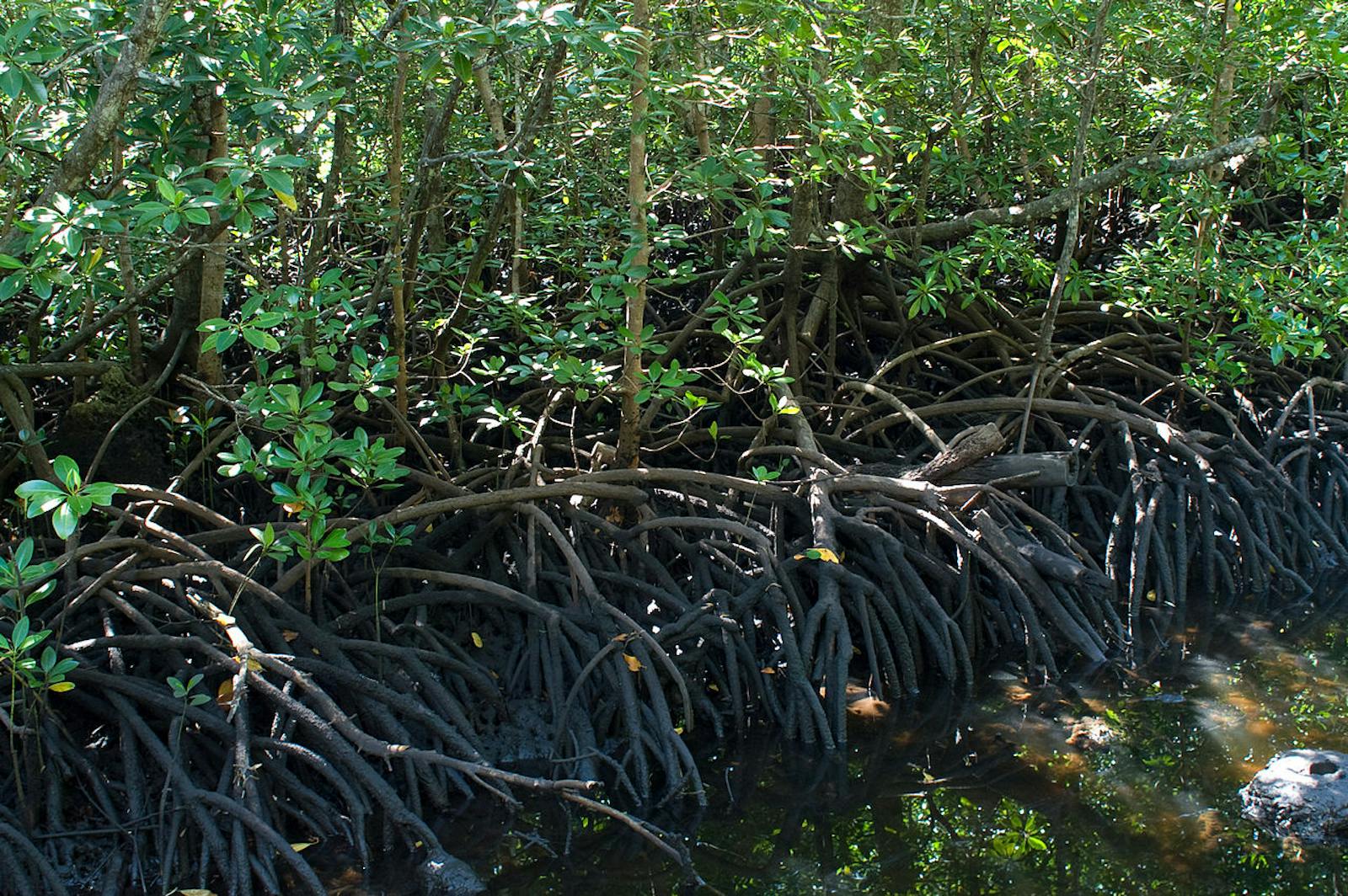East African Mangroves
The ecoregion’s land area is provided in units of 1,000 hectares. The protection goal is the Global Safety Net (GSN1) area for the given ecoregion. The protection level indicates the percentage of the GSN goal that is currently protected on a scale of 0-10.
Bioregion: East African Coastal Forests (AT7)
Realm: Afrotropics
Ecoregion Size (1000 ha):
221
Ecoregion ID:
112
Conservation Target:
56%
Protection Level:
9
States: Somalia, Kenya, Tanzania, Mozambique
Mangroves are described as “the most critically threatened ecosystem in the world,” mainly due to their clearance and conversion to aquaculture, salt pans, and farmland. An increasing threat to mangroves across the world is from rising sea levels caused by climate change, which is predicted to increase by 18–59 cm by 2100. This could result in the loss of coastal habitats as a result of flooding and erosion. The Rufiji delta in the East African Mangroves ecoregion, the largest continuous block of estuarine mangrove forests in Africa, is just one of the areas which is at risk from sea level rise.
-CC_Charles%20J%20Sharp-2016_resized.jpg)
The flagship species of the East African Mangroves ecoregion is the blue monkey. Image credit: Creative Commons
East African mangroves are found in Mozambique, Tanzania, Kenya, and southern Somalia. The dominant climatic influences on most of the region are the seasonal wind patterns associated with the Northeast monsoon (NEM), the Southeast monsoon (SEM), and the major coastal currents. The most extensive areas of mangrove are found in the Rufiji River Delta in Tanzania and the Zambezi River Delta in Mozambique. Along the Kenyan and Tanzanian coasts there are two general categories of mangroves: those found in fringe communities along the open coastline, and those found in estuaries and at river mouths.
Fringe mangroves often indicate the presence of groundwater discharge sufficient to lower salinity levels, for example at Mida Creek and the Lamu Archipelago in Kenya. Estuarine mangroves are found in areas of low tidal energy and muddy to sandy substrates, where there are distinct zonation patterns among mangrove tree species. Ten species of mangroves are found throughout the region, the distribution of which is primarily determined by salinity gradients, depth of water table, and the soil’s pH and oxygen content. Sonneratia alba is a pioneer species found on open coasts, with Heritiera littoralis and Bruguiera gymnorrhiza often found behind it. Other species include Avicennia marina, Rhizophora mucronata, Ceriops tagal, Lumnitzera racemose, and Xylocarpus granatum.
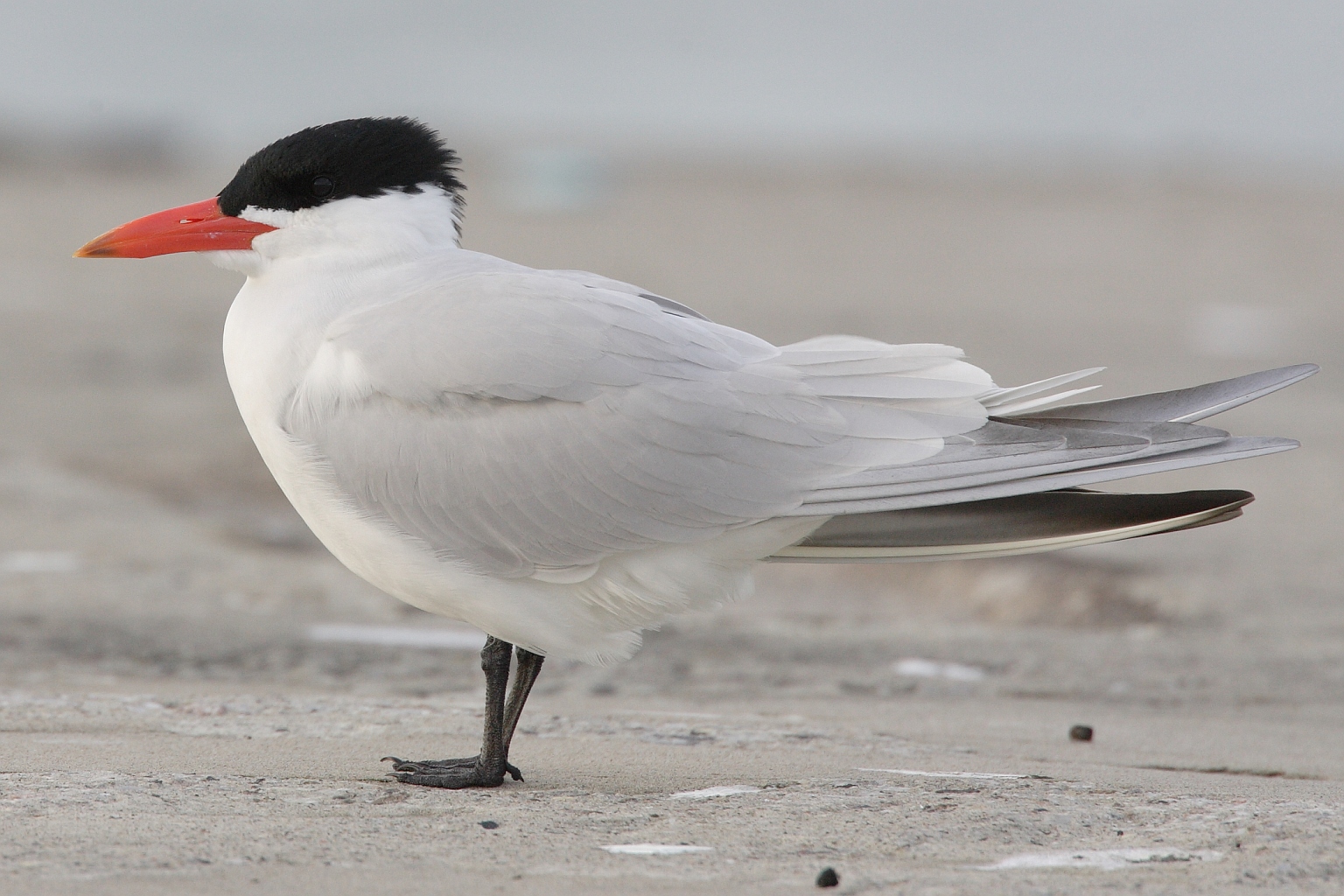
Caspian tern. Image credit: Creative Commons
The East African Mangroves are an exceptionally productive ecoregion. They function as nutrient traps for river catchments and provide shelter and refuge for the juveniles of many important species of fish, shrimps, crabs, and molluscs. The shallow intertidal mudflats often associated with mangroves scattered along the coast also provide important foraging sites for migratory birds. Mangrove forests also play an important role in preventing shoreline erosion, and prevent sediment flowing onto coral reefs and seagrass beds.
The mangrove forests and associated wetland ecosystems of the Rufiji and Zambezi Deltas are internationally important sites for migratory wetland birds, such as curlew sandpiper, little stint, roseate tern, and Caspian tern. In more intact mangrove areas, upstream mangroves also provide habitat for the Nile crocodile, hippopotamus, blue monkey, and spot-necked otter. The Tana River Delta and the Rufiji Delta are important for breeding and feeding populations olive ridley, hawksbill, and green turtle.
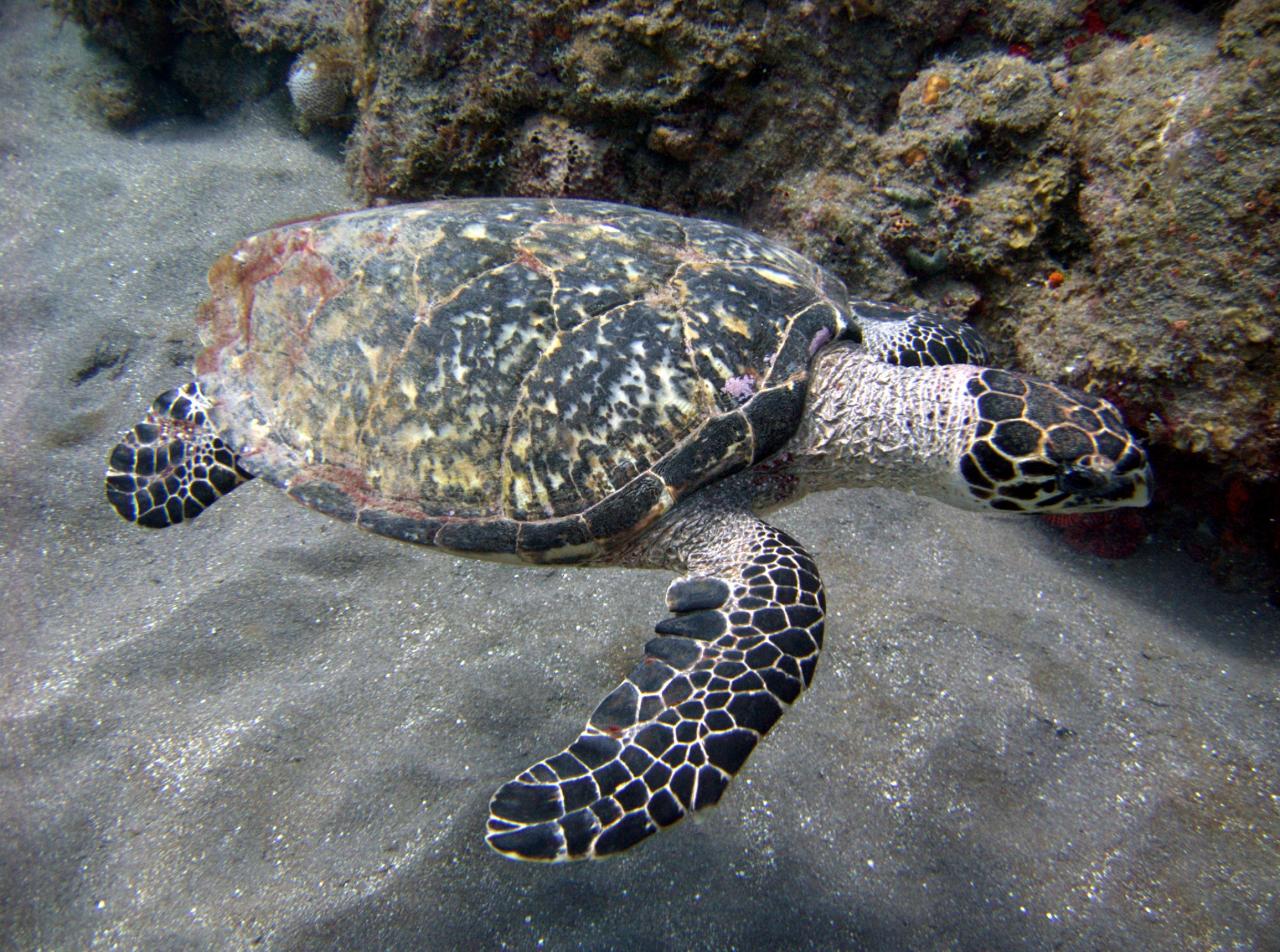
Hawksbill turtle. Image credit: Creative Commons
Several protected areas contain mangrove forest, for example Rufiji-Mafia-Kilwa ramsar site, Mafia Island Marine Park, Jozani–Chwaka Bay National Park, Menai Bay Conservation Area, and Sadaani National Park in Tanzania; in Tanzania, large mangrove stands are also managed as forest reserves by a special mangrove unit within Tanzania Forest Service. Kiunga Marine Reserve, Watamu Marine National Reserve, Pete Marine Community Conservancy, Lower Tana Delta Conservation Trust in Kenya; and Bazaruto Marine National Park, Ilhas da Inhaca e dos Portugueses Faunal Reserve, Marromeu Game Reserve, Pomene Game Reserve, Quirimbas Marine Park, and Maputo Game Reserve in Mozambique. There are no protected areas in Somalia.
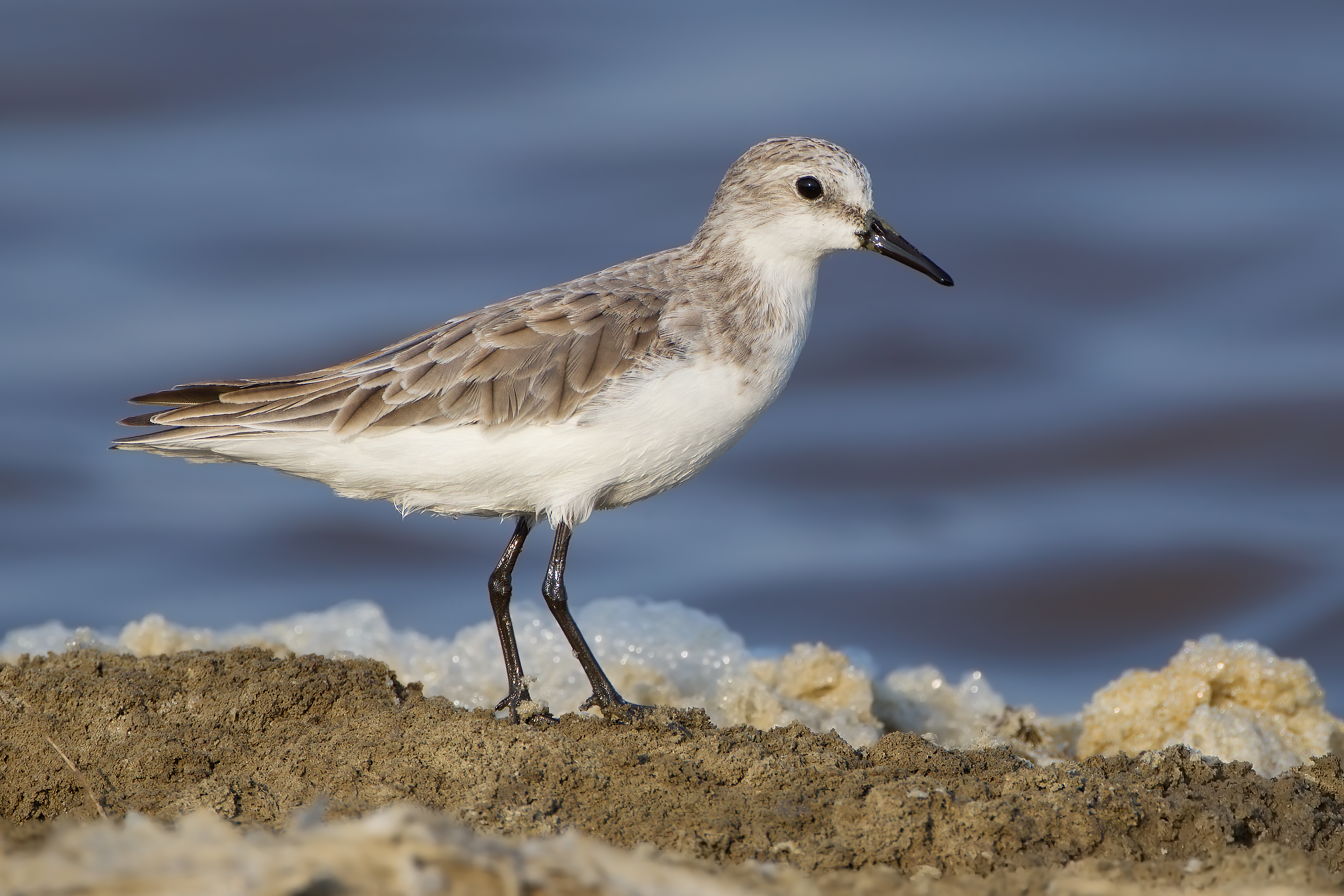
Little stint. Image credit: JJ Harrison, Creative Commons
For thousands of years people have harvested mangroves for timber and fuel along the East African coasts. The trade continues today with larger towns along the coast of mainland East Africa and also with Zanzibar and the Middle East. This has resulted in the clearance or degradation of large areas of mangroves in the region. Large numbers of mangroves trees are still being removed as timber and poles for housing construction (the wood is termite resistant), for fuelwood used domestically and for smoking fish, and to obtain tannins from mangrove bark to use as preservatives. Medicines and mosquito repellent are also obtained from mangroves.
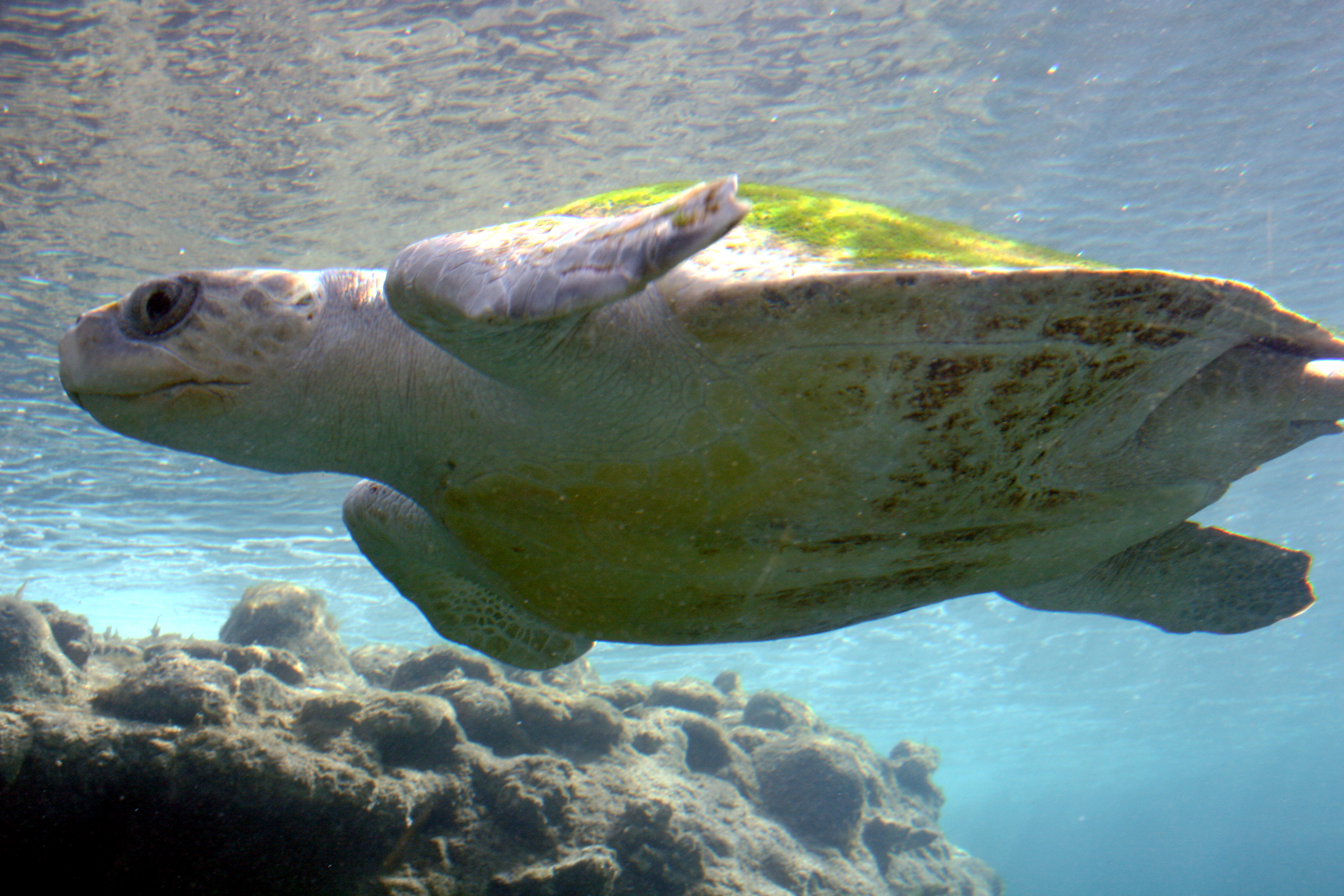
Olive ridley sea turtle. Image credit: Thiery Caro, Creative Commons
Mangrove stands are also being cleared for the creation of rice paddies, saltpans, aquaculture, and urbanization. Mangroves also receive untreated agricultural waste and sewage discharged to rivers and coastal waters, as well as industrial pollution, silt from erosion and dumping of dredging’s, and pesticides in runoff. The widespread destruction of mangroves has led to increased siltation of coral reefs, changes in seagrass beds, and coastal erosion. Additionally, rising sea levels caused by climate change is a growing threat.
The priority conservation actions for the next decade will be to: 1) support the creation of alternative livelihoods including ecotourism; 2) promote community based forest management practices as an alternative to state control as well as create awareness as to the benefits of conserving mangrove ecosystems in sustaining natural resources, such as fish; and 3) restore degraded mangrove areas.
Citations
1. Burgess, N., Hales, J.A., Underwood, E., Dinerstein, E., Olson, D., Itoua, I., Schipper, J., Ricketts, T. and Newman, K. 2004. Terrestrial ecoregions of Africa and Madagascar: a conservation assessment. Island Press.
2. Mangora, M.M. 2011. Poverty and institutional management stand-off: a restoration and conservation dilemma for mangrove forests of Tanzania. Wetlands ecology and management. 19(6), pp.533-543.
3. McNally, C.G., Uchida, E. and Gold, A.J. 2011. The effect of a protected area on the tradeoffs between short-run and long-run benefits from mangrove ecosystems. Proceedings of the National Academy of Sciences. 108(34), pp.13945-13950.
